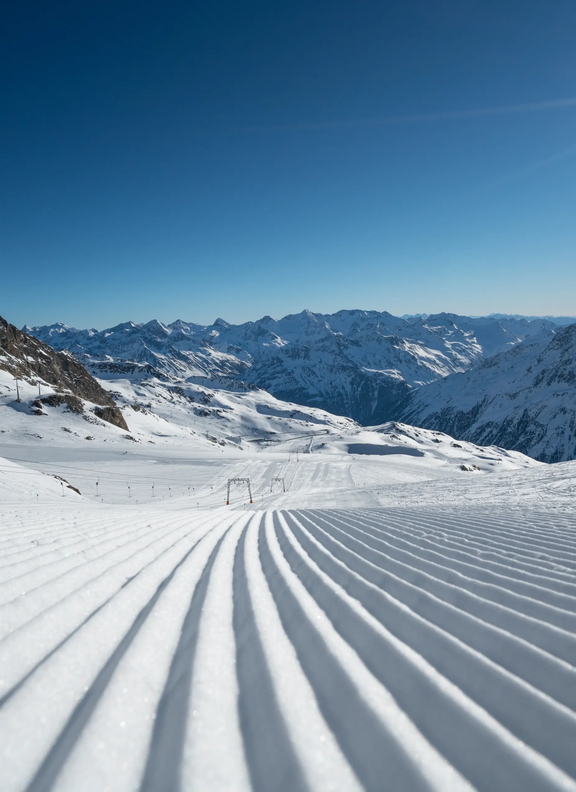

Safety in the ski area
safety first
For Bergbahnen Sölden, the safety of employees and all winter sports enthusiasts is a top priority. Some precautions are visible, such as ski piste markings and safety fences. Many other efforts, such as the work of the Avalanche Commission, take place behind the scenes. Here we inform you about our comprehensive safety measures.

Slope rescue service
In the event of an accident on the ski slopes, our perfectly coordinated and tried and tested rescue chain starts immediately after the accident is reported.
Depending on the degree of injury, our expert slope rescue team decides whether they can transport the patient to the valley by akja sled or skidoo or whether they call the emergency helicopter. Emergency medical care is available in Sölden or in the nearby hospitals of Zams or Innsbruck.
emergency number :
T +43 5254 508 825
(Alarm centre Gailsachkoglbahn middle station)
slope rescue card
With our slope rescue card you are on the safe side in terms of insurance: it includes free rescue service and care in the entire secured ski area of Sölden and Gurgl during regular ski operation times, including transport by the slope rescue team to the Austrian Red Cross or the rescue helicopter. It only costs € 4 per person and skiing day.
Safety measures
- Ski piste markings, top safety fences
In addition to the ski slope markings, our extensive safety concept also includes padding on lift pillars and snow cannons as well as fall protection on the edges of the piste. Therefore we have developed highly technical safety nets that are checked daily.
- Avalanche Commission
Our independent and autonomous avalanche commission meets daily in order to assess and discuss the current situation. If necessary, avalanche blasting is carried out early in the morning to clear slopes of potentially dangerous snow load.
- Closed lifts/slopes
Even if at first glance you may not be able to understand why a ski slope is closed, there is always a good and especially safety-related reason. Unfortunately, it is a necessary measure in order to maximize the safety of you and our employees.
further important information
As a winter sports enthusiast, you should absolutely know the 10 globally valid rules of conduct of the International Ski Federation (FIS).
- Respect other skiers and snowboarders:
A skier or snowboarder must behave in such a way that he does not endanger or prejudice others. - Control of speed and skiing ability:
A skier or snowboarder must move in control. He must adapt his speed and manner of skiing or snowboarding to his personal ability and to the prevailing conditions of terrain, snow and weather as well as to the density of traffic. - Choice of route:
A skier or snowboarder coming from behind must choose his route in such a way that he does not endanger skiers or snoboarders ahead - Overtaking:
A skier or snowboarder may overtake another skier or snowboarder above or below and to the right or to the left provided that he leaves enough space for the overtaken skier or snowboarder to make voluntary or involuntary movement. - Entering, starting and moving uphill:
A skier or snowboarder entering a marked run, starting again after stoping or moving upwards on the slopes must look up and down the slopes that he can do so without endangering himself or others. - Stopping on the slope:
Unless absolutely necessary, a skier or snowboarder must avoid stopping on the piste in narrow placers or where visibility is restricted. After a fall in such a place, a skier or snowboarder must move clear of the piste as soon as possible. - Climbing and descending on foot:
A skier or snowboarder either climbing or descending on foot must keep to the side of the piste. - Respect signals and signposts:
A skier or snowboarder must respect all signs and markings. - Assistance and help:
In case of an accidents on the slopes every skier or snowboarder is duty bound to assist. - Identification:
Every skier or snowboarder and witness, whether a responsible party or not, must exchange names and addresses following an accident.
We divide our developed ski area into organized and free skiing terrain.
| Piste | Ski route | Variation | |
|---|---|---|---|
| Ski area | ORGANISED SKI AREA | ORGANISED SKI AREA | FREE SKI AREA |
| Marking | Marked | Marked | NOT Marked |
| Width | Sufficiently wide slopes |
Widht NOT defined |
NOT tracked at all |
| Grooming | Groomed | NOT groomed | NOT groomed |
| Control | Controlled | NOT controlled | NOT controlled |
| Alpine hazards | Protect against atypical hazard |
Protected against avalanche hazards |
NOT protected against Alpine hazard |
What does the color scale of the slopes mean? We will explain what you can expect on blue, red and black slopes and ski tour routes.
 |
Easy (Blue Piste) The gradient of the ski trails does not exceed 25% (both longwise and crosswise), except in some short off-piste sections |
 |
Intermediate (Red Piste) The gradient of the ski trail does not exceed 40% (both longwise and crosswise), except in some off-piste sections. |
 |
Difficult (Black Piste) The gradient of this ski trail exceeds the maximum parameters of the Red Piste. |
 |
Ski Route This is an accessible downhill ski trail suitable for skilled sportsmen with the appropriate winter sports equipment. It is a marked ski trail butprotected only against avalanche hazards (and not against other hazards). The ski trail is NOT groomed and NOT controlled. |
Always pay attention to our signs and panels indicating the dangers off the marked ski slopes.
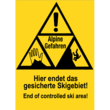 |
ALPINE HAZARDS Bear in mind that you are in high Alpine regions! You leave the marked ski trails at your own risk and on your own responsibility. In glacier regions there is always and everywhere a risk of crevasses in off-piste areas. |
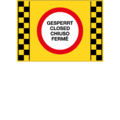 |
AVALANCHE HAZARD If the avalanche hazard for a ski trail or ski route is rated high the ski trail/route and its surrounding area must be closed immediately! In case that all ski trails/routes of a certain ski lift have to be closed, the ski lift must either be closed or the passengers are not allowed any more to take winter sports equipment with them. |
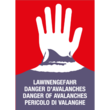 |
AVALANCHE HAZARD IN OFF-PISTE SKI AREAS Attention has to be paid every time you leave the marked ski area (ski trails/routes). Hazards - especially avalanche hazards - in high Alpine regions should never be underrated. Check the avalanche hazard scale daily and if necessary hourly! Every skier is responsible for his own actions and decisions in the off-piste ski area. If the avalanche report issued by the Avalanche Warning Center states a high risk of avalaches (level 4 or 5 according to the European Avalanche Scale) all avalanche warning lights on the local information plates and boards are turned on. |
Source: Leitfaden: Die Verkehrssicherungspflicht für Skiabfahrten, SITOUR GmbH, 1999
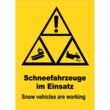 |
Operating hours - slopes out of service For your own safety, it is essential that you pay attention to the information plates at the ski lifts, displaying operating times and conditions of ski trails.The last control takes place right after the ski lifts close. Out of the official operating times there is no control of hazards on the slopes - Please be extremely careful and pay attention! There is always a risk of injuries due to grooming vehicles, uneven spots, ropes, cables and tubes of snow-making machines. |
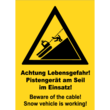 |
Betriebseinstellungen aus Sicherheitsgründen Lifts can be stopped at any time due to safety reasons |
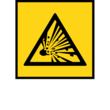 |
Avalanche blasting operations Please note that blasting operations to artificially trigger avalanches are carried out within the entire ski area at any time of the day or night, especially in case of fresh snowfall, strong high-altitude winds or effects of sun exposure. Skiing on and entering such terrain, except for the marked and open ski slopes and runs, is strictly prohibited at that time. |
Source: Leitfaden: Die Verkehrssicherungspflicht für Skiabfahrten, SITOUR GmbH, 1999
We are equipped with the RECCO® tracking system that allows localization using radar technology. However, it does not replace the avalanche transceiver! Further information at www.recco.com.
